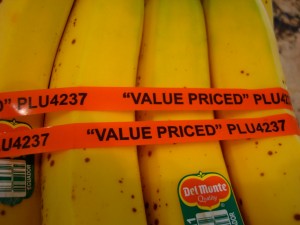 There’s a good, well-informed post by Tim Baker on ‘The State of Dynamic Pricing‘. So, what do we know so far?
There’s a good, well-informed post by Tim Baker on ‘The State of Dynamic Pricing‘. So, what do we know so far?
First, on the term. Dynamic Pricing is not about offering different prices to different market segments, nor is it about scaling the house or other quality differentials, nor about discounts for subscriptions and memberships, nor about pricing differently for shows and times where it is easily forecast that demand for tickets will be higher or lower than usual, nor about posting prices of the ‘$10 in advance; $12 at the door’ variety. It is about adjusting the price for a specific item – e.g. row 10, seat 12, Tuesday night, The Poppy Family reunion tour – according to how the demand for tickets is revealing itself since going on sale.
[W]e need to monitor for when a venue’s sales are different than anticipated, so we can take action to dynamically price. This means tracking sales against a predictive model based on comparator events so that we can know at any point if we are ahead or behind where we’d expect to be.
Yes. Smart pricing requires keeping track of data such that an estimate of the ‘demand curve’ (how many tickets we could expect to sell for some relevant range of prices) can be formed; that’s the only way the revenue-maximizing price can be determined, and the only way to see whether, once tickets are on sale, it looks like the forecast demand was on or off target.
Baker asks whether the process can be automated:
You will hear talk of algorithms analysing sales patterns and changing prices automatically. This is not necessarily right for our sector. Our events are not commodities (and thus unlike the hotels, airlines and other commercial sectors where automatic algorithm-driven dynamic pricing is used), but usually live events with many intangible benefits, and with very different sales patterns according to the venue, the artists, the show, time of year, and so on. Detailed monitoring of sales movements is essential if you are to make sense of the sales patterns and dynamically change prices. But human intervention is needed.
I would say ‘yes, and no.’ Although there are hopes for an app that can take care of an organization’s dynamic pricing needs, we have to remember that what drives dynamic pricing is that the original estimate of the demand curve for tickets was wrong and needs adjusting. But by how much the price ought to be adjusted depends on why you think you got the forecast wrong in the first place, and in turn what you think the impact of a price change will be given the changed circumstances. There cannot be an automatic app for that, because it is impossible to program in advance all the various contingencies that caused the demand forecast to be wrong. Baker is right: you need a human or two to assess the situation. Where I disagree is in thinking this is a result of the nature of the arts. Hotels and airlines need algorithms because their pricing is so complex, taking into account the variety of seats or beds on offer and all competitor prices. The algorithm is needed by airlines and hotels because their problem exceeds human capacity, and as such the pricing adjustments are somewhat imperfect (which is why they are continually adjusting, iteratively looking for the right price).
And a question that always arises: is dynamic pricing immoral? No, it isn’t. Deceiving patrons is immoral, but being transparent that dynamic pricing is a policy of the organization is perfectly ethical. Original posted prices are based upon forecasts of demand. If the forecast proves to have been wrong, if demand is not what was expected, there is nothing evil in changing the price to reflect that.
I still have some worries about the practicality of dynamic pricing, however. It requires the decision-maker in the organization having a strong sense of why changing a price mid-stream will increase the total revenues from the production, and not over-shooting on the adjustment. And there is a way the arts are different from airlines and hotels: when airlines and hotels change their prices, they are telling me something about demand for a specific flight to Boise, or a room on a Thursday night in Albuquerque, but they are not telling me anything about what it is like to fly to Boise or to stay in Albuquerque. There is no information about the product contained in their price adjustment. But if an arts presenter is cutting prices mid-stream to boost demand, that does give me some hints that maybe the word-of-mouth on the show is not very good, in which case even a lower price will not induce me to go, and may have the unintended consequence of being a deterrent. Arts demand tends to follow ‘cascades’, responsive to signals of quality. Be careful what you are saying with your price adjustments.

Surely the risk for businesses using dynamic pricing is the number of disgruntled early purchasers, who feel that they have been abused.
I booked a hotel room through an online booking agent, only to discover that they had hiked the price up to way above the real value of the room, because it was the last vacancy at that particular hotel.
The hotel later reduced the price. Lesson learned, and I will never use that online booking site again !